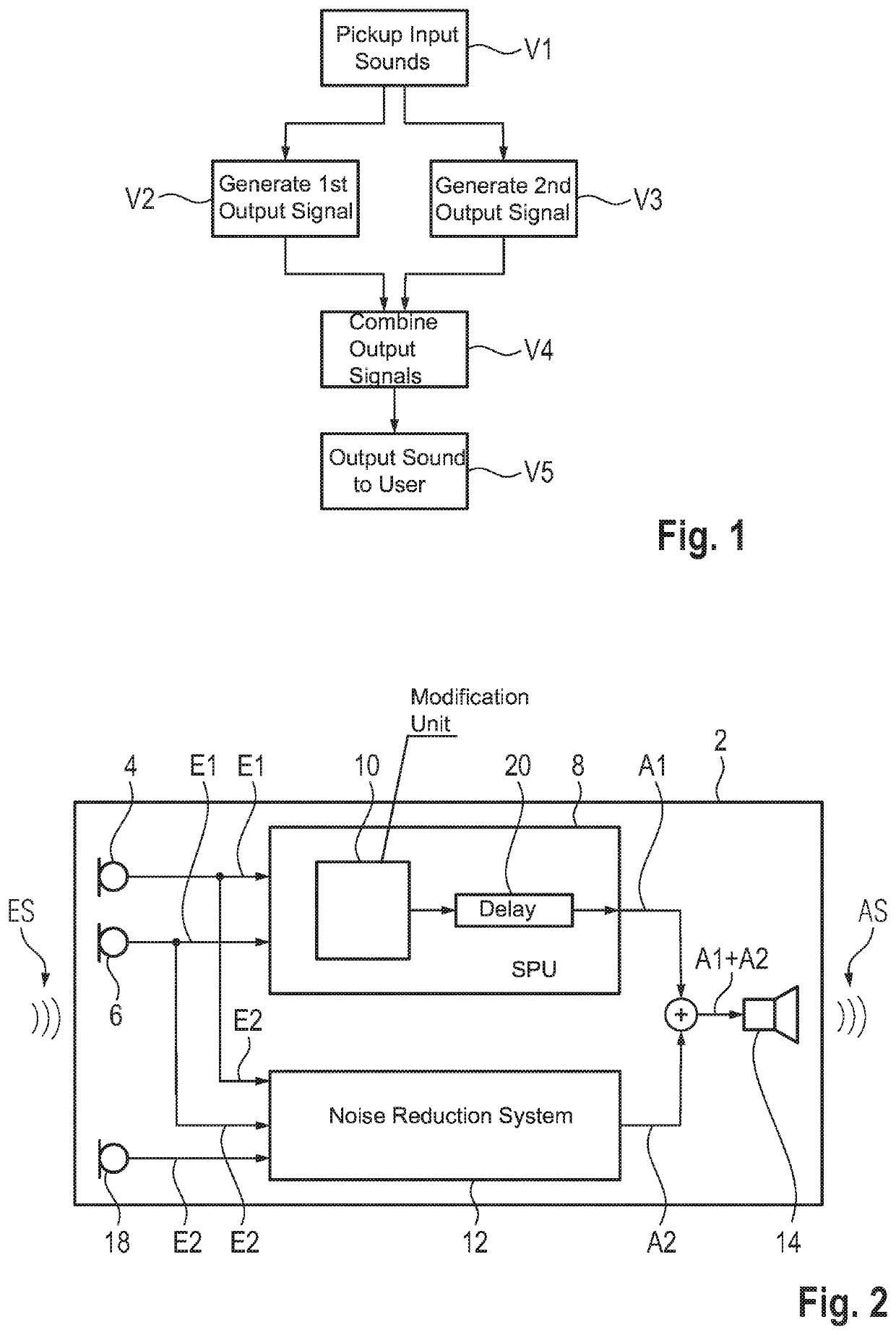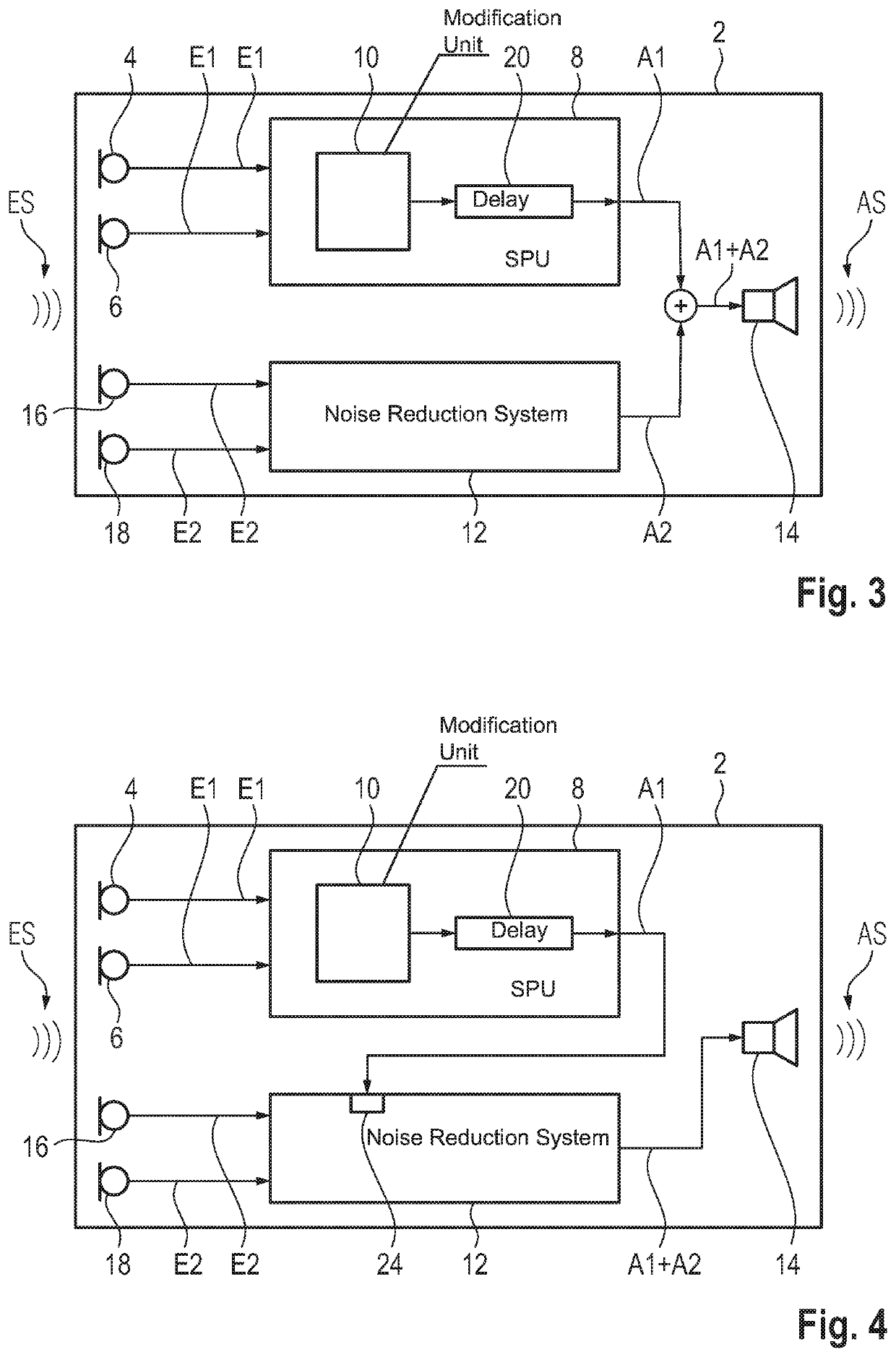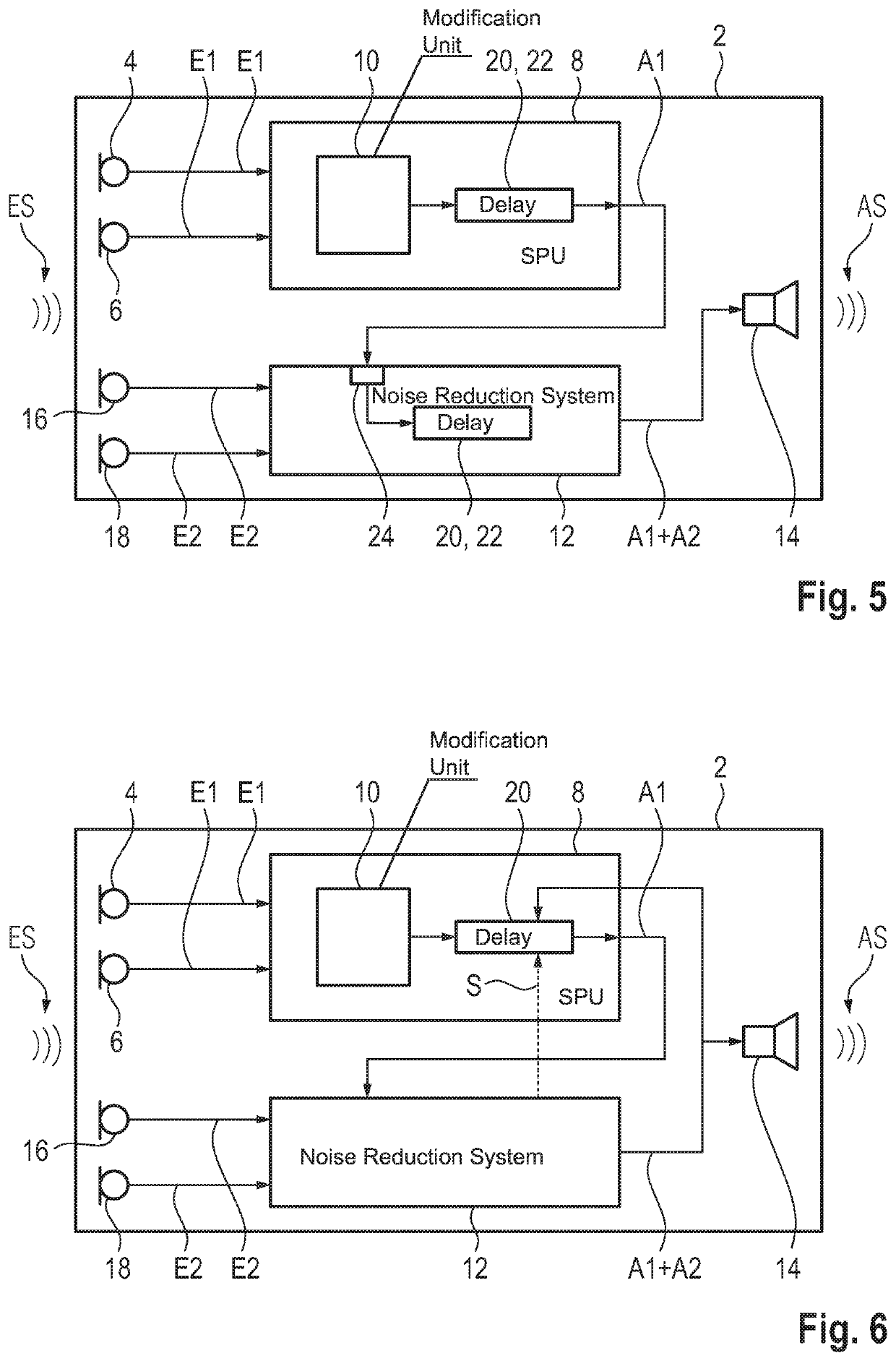[0014]The signal processing section requires a certain processing time in order to modify the input signal. The processing time is accordingly in particular a delay as a result of the modification unit. The processing time is ideally as short as possible, in order to avoid a delayed output as far as possible. Since at least a portion of the input sound signal normally enters the auditory canal, this portion is overlaid with the output sound signal. Due to the signal processing, the input sound signal and the output sound signal are then offset in time by a time lag. If the processing time of the signal processing section is too long, the time lag is perceptible to the user and is typically sensed as a nuisance. A benchmark for an upper limit of the processing time is 10 ms, values above this typically being unacceptable to the user. Accordingly, it is therefore a fundamental aim to perform the signal processing as quickly as possible and to reduce the processing time and accordingly the time lag as far as possible. A processing time of 1 ms or less is possible and advantageous, this regularly being imperceptible and leading to an accordingly good listening experience for the user.
[0022]There is particular preference for a configuration in which the hearing device has a delay unit, in order to set a time difference between the first output signal and the second output signal and therefore in particular also between the respective conversion of the signals by the receiver. The hearing device therefore has an adjustable time difference. Here, “adjustable” is understood to mean that at least two different values are settable for the time difference. In a particularly simple, suitable configuration a firm value is predefined for the time difference and the value is therefore adjustable by virtue of the delay unit being either activated or deactivated, that is to say the firmly predefined time difference being either added or not added. A configuration in which the time difference is adjustable within a predefined range, in particular during operation of the hearing device, is also suitable. The delay unit is integrated in the signal processing section or in the noise reduction system or arranged outside these two. A combination of these is also possible and suitable by virtue of the delay unit having multiple subunits that are formed separately from one another and that collectively produce the time difference. The delay unit and the adjustable time difference allow the first and second electrical output signals to be delayed relative to one another such that the above-described disadvantages of simultaneous operation of the signal processing section and the active noise reduction system are advantageously reduced. The delay unit is therefore used in particular to reduce a correlation between the output signals.
[0026]A configuration in which the time difference is set in a range from 2 ms to 5 ms is particularly suitable. This range is a good compromise between low correlation and hence low interference, on the one hand, and a short delay of the hearing device function, on the other hand. For an exemplary delay time of 1 ms for the signal processing section the sum of the processing time of the signal processing section and the time difference is then no more than 6 ms, which means that a good hearing experience is still provided. At the same time, the time difference is sufficiently great to adequately reduce the correlation between the two output signals.
[0027]In a particularly preferred configuration the hearing device has two modes of operation, namely a rejection mode, in which the active noise reduction system is activated, and a normal mode, in which the active noise reduction system is deactivated. The time difference of the delay unit is set such that a delay between the input signal of the signal processing section and the output signal thereof is greater in the rejection mode than in the normal mode. In this configuration the adjustable time difference is accordingly chosen to be as small as possible in the normal mode in order to ensure the best possible hearing experience, the by and large small time difference being possible primarily by virtue of the noise reduction system being deactivated and therefore no interference and correlation effects being able to occur. Preferably, the delay unit is also deactivated in the normal mode and the adjustable time difference is therefore 0 ms. In the rejection mode the processing time of the signal processing section then consciously has the additional time difference added to it, so that the interference and correlation effects that potentially occur are reduced.
[0032]Alternatively, a configuration in which the hearing device has at least two external microphones, namely a first external microphone and a second external microphone, wherein the two external microphones each generate an input signal, namely a first input signal and a second input signal, one of which is forwarded to the signal processing section, while the other is forwarded to the noise reduction system, is also advantageous. In particular, neither of the two input signals is forwarded both to the signal processing section and to the noise reduction system. The signal processing section generates the first output signal on the basis of one input signal and the noise reduction system generates the second output signal on the basis of the other input signal. In an expedient development, the hearing device has three external microphones, namely a first external microphone, a second external microphone and a third external microphone. The external microphones each generate an input signal that is forwarded either to the signal processing section or to the noise reduction system in each case. Preferably, the input signals from the first and second microphones are forwarded to the signal processing section and the input signal from the third microphone is forwarded to the noise reduction system. The signal processing section therefore generates the first output signal on the basis of the two input signals from the first and second external microphones and the noise reduction system generates the second output signal on the basis of the input signal from the third external microphone.
 Login to View More
Login to View More  Login to View More
Login to View More 


